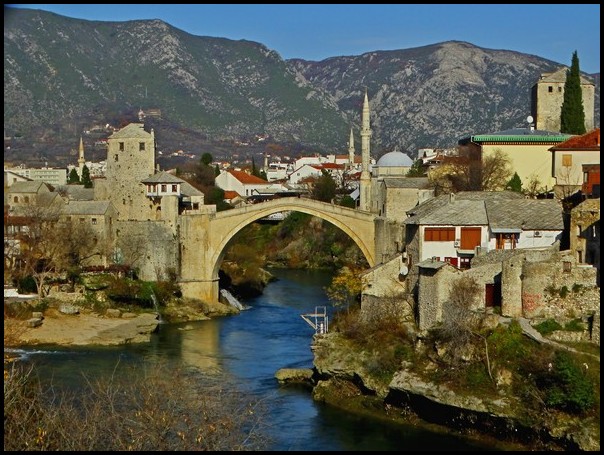
Mostar – Bosnia
Introduction to Bosnia
Bosnia is a small, mountainous, land-locked country on the Balkan Peninsula in eastern Europe. It’s officially called Bosnia & Herzegovina, often abbreviated to BiH (where ‘i’ means ‘and’ like the Spanish ‘y’), or called Bosnia for short. Sarajevo is the capital city.
Bosnia is bordered by Croatia on the west and north, Montenegro on the south and Serbia on the east. Bosnia is full of mountains, rocks, rivers and waterfalls. There’s a lot of spectacular scenery, attractive historic towns and friendly people.
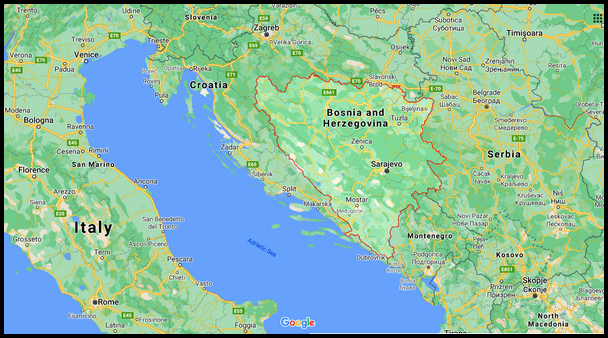 Although Bosnia is not part of the EU, the country is a member of the UN, the Council of Europe and other European organizations. Since 2010, Bosnian citizens have been entitled to travel through all 28 EU countries without a visa, making travel (and sometimes work) life considerably easier for Bosnians. All said, Bosnia has strong connections and interactions with Western Europe.
Although Bosnia is not part of the EU, the country is a member of the UN, the Council of Europe and other European organizations. Since 2010, Bosnian citizens have been entitled to travel through all 28 EU countries without a visa, making travel (and sometimes work) life considerably easier for Bosnians. All said, Bosnia has strong connections and interactions with Western Europe.
For visitors to Bosnia, the main attractions include visiting historic towns, where visitors can see a great variety of historic architecture and unique specialized museums; enjoying a variety of cuisines and beverages; admiring spectacular outdoor scenery and joining outdoor activities.
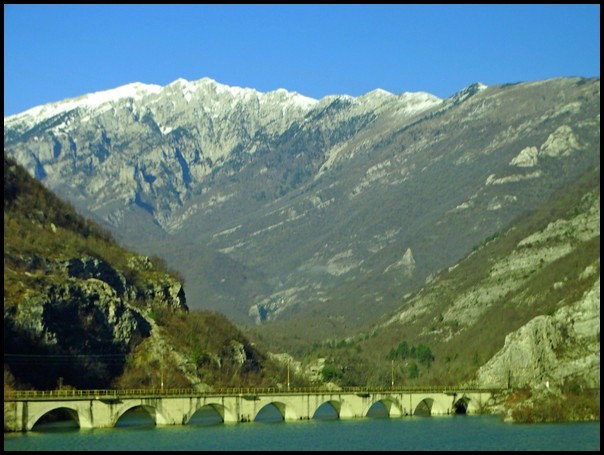
Bosnian mountains between Mostar & Sarajevo
Geography of Bosnia
As I noted above, Bosnia is a land-locked country. However, that’s not 100% accurate. Bosnia boasts a tiny 20 km / 12 mile slice of Adriatic Coastline situated in the middle of Croatia’s long, long coast, midway between Split and Dubrovnik.
Bosnia’s sole tiny coastal ‘resort’ town of Neum, offers a selection of small hotels, guest houses, restaurants, cafes and minor pebble beaches. However, it’s not the most attractive town on the generally stunning Adriatic Coast (I passed through Neum twice while traveling between Split and Dubrovnik).
I wouldn’t exactly recommend visiting Neum for any reason. Instead, anyone interested in the Adriatic Sea’s beautiful coast, beaches and coastal towns & resorts should head to Croatia.
To enjoy Bosnia, stick to the considerably more spectacular inland Bosnian scenery – rugged mountains, forests, rivers of all sizes and descriptions, and numerous stunning waterfalls.
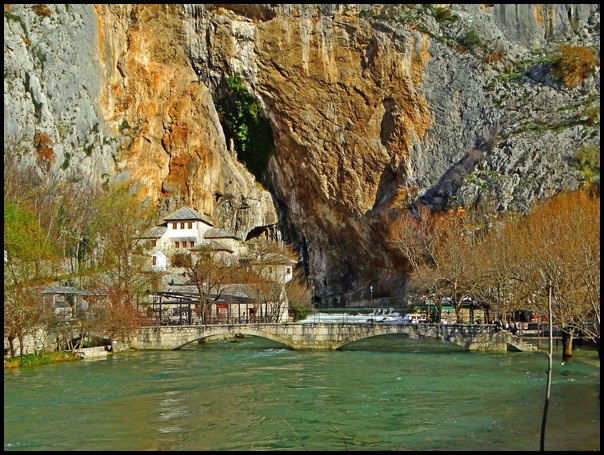
Blagaj Sufi Monastery
The main mountain ranges in Bosnia are called the central Dinaric Alps, which run in a northwest to southwest direction. They are higher in the south, with about a dozen major mountains, the highest of which is Mt. Magilic at 2,386 metres / 7,828 feet. The Dinaric Mountains are primarily limestone and have many minerals, which have been historically important for trade.
Impressively, 50% of Bosnian land is covered in forests.
Bosnia also seems to be almost over-run by rivers, streams and waterfalls. In fact, there are seven major rivers, in addition to all their tributaries.
The Sava River is the largest in Bosnia. It forms the border with Croatia and flows northward, eventually entering Europe’s great Danube River then on to the Black Sea. Other major rivers include the Bosna, Nerevta, Vras, Drina and others.
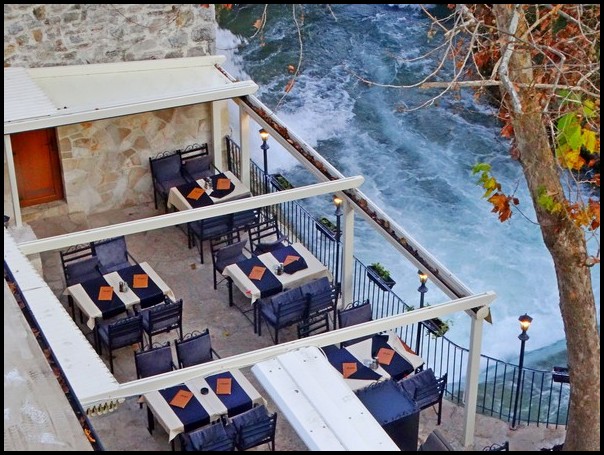
Riverside restaurant Mostar
Considering how small Bosnia is, with so many major and minor rivers, it’s no wonder the country seems to be full of water everywhere!
A majority of Bosnia’s towns and cities, both historic and modern, are situated on rivers. Some are located in deep river valleys or gorges, like Mostar, while others are set alongside placid rivers flowing through wide flatlands, like Sarajevo.
A few especially-beautiful historic towns, like Mostar and Jejce, actually have dramatic waterfalls right in the middle of their towns!
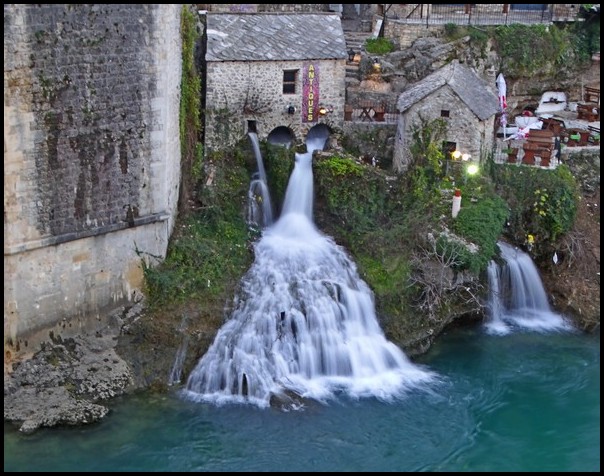
waterfalls in the center of Mostar historic district
Bosnia’s rugged mountains and gushing rivers provide great opportunities for all sorts of outdoor activities. And in recent years, Bosnia has been offering a huge range of outdoor adventures around the country.
There’s hiking, mountain biking, white-water rafting, canoe-ing & kayaking, skiing, horse-back riding, river swimming, river high jumping and visits to some really spectacular waterfalls.
Bosnia’s Complex Culture
As a result of Bosnia’s long, diverse and complex history, modern Bosnia has a very complex culture. To start with, there are three main ethnic groups making up Bosnian society – Croats, Bosnians and Serbs. This has lead to great complex of religions & cultures.
Bosnians are primarily Muslim, due to the 400-year-long rule of Ottoman Turks. Throughout the country, there are thousands of Muslim mosques, most of Ottoman Turkish design, many historical. Bosnian culture and daily life has been greatly influenced by the Turks, in terms of their traditional clothing, cuisine, coffee and tea cultures.
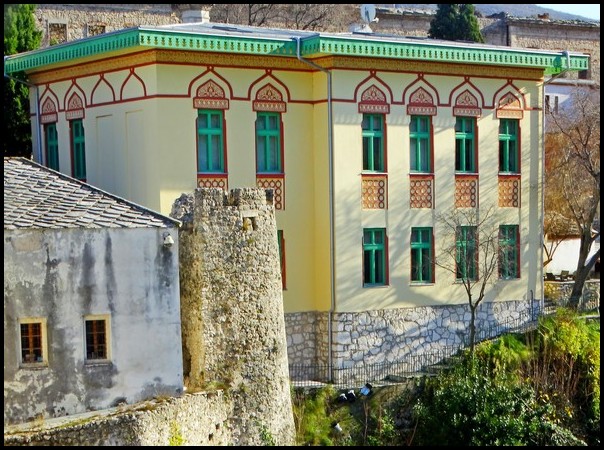 Croats are primarily Catholic and have historically been greatly influenced by European culture. They live mostly in the western and northern regions of Bosnia. Catholic Cathedrals are also found throughout Bosnia, quite often near mosques.
Croats are primarily Catholic and have historically been greatly influenced by European culture. They live mostly in the western and northern regions of Bosnia. Catholic Cathedrals are also found throughout Bosnia, quite often near mosques.
Serbs are Orthodox Christian.
Reportedly, nowadays these different ethnic groups generally get along rather peacefully. Some towns are primarily one ethnic/religious group, while other towns have a mix of two or all three groups. Needless to say, the Bosnian government promotes freedom of religion.
In any event, all this makes Bosnia a unique and very interesting country to explore, particularly for visitors interested in history, culture, religion and/or cuisines.
All over Bosnia, you’ll find mosques, Catholic cathedrals and Orthodox churches. Historic architecture is diverse, but most prevalent are medieval, Ottoman, and Austro-Hungarian styles. There are a plethora of museums on various aspects of Bosnian history, culture, the 1990s wars and other regional topics. There’s also a wide variety of cuisines, beverages and desserts.
Brief Ancient History of Bosnia
Kingdom of Bosnian – Ottoman Empire – Austro-Hungarian Empire
Archaeological evidence shows that people settled in this region from the Neolithic Period, 7000 BC onwards. In the 700s-300s BC various Illyrian and Celtic peoples ruled the area. Greeks then Romans had brief presences there in 300sBC to early 100s AD.
In the 500s-800s AD Slavic peoples arrived and settled in the region. By the 1200s, they established a country called Bosnia, which later became the Kingdom of Bosnia in the 1400s.
The Kingdom of Bosnia was rather short-lived, however, because the whole region was conquered by the great Ottoman Turkish Empire in 1463. They ruled for over 400 years, until 1887.
The Turks introduced Islam to the formerly Christian Bosnians, as well as Turkish cuisine, coffee, tea and desserts; clothing styles; Ottoman architecture and other aspects of Turkish culture & attitudes.
The Ottomans built many towns and cities with handsome Ottoman buildings, arched stone bridges and mosques. Many of these structures still stand and count as some of Bosnia’s main attractions.
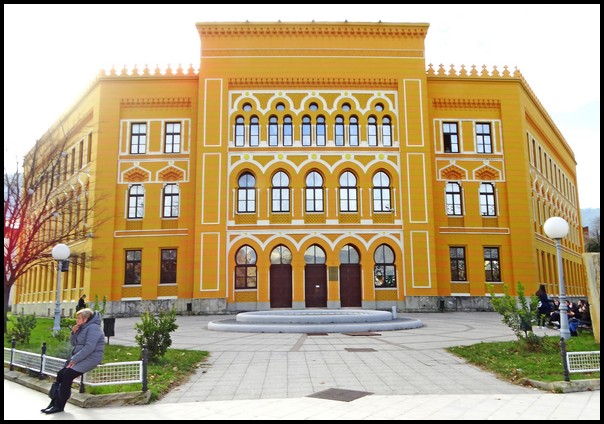
historic gymnasium Mostar
In 1887 the Ottomans were defeated and pushed out of the Bosnian region. The Austro-Hungarian Empire quickly stepped into Bosnia. They industriously built many grand European-style buildings in key cities like Sarajevo, Banja Luka, Tuzla and Mostar.
The Hapsburgs also introduced many types – at the time – of modern technology from Europe, such as trolleys, railroads and clock towers. It’s famously noted that the Hapsburgs did more for Sarajevo in 40 years than the Ottomans did in 400 years. It’s thanks to the Hapsburgs that Bosnia was brought up to contemporary European standards of the time.
The Hapsburgs were only in control of Bosnia for 40 years, from 1887-1917. In 1917, Bosnia gained its independence from the Hapsburg Empire when it partnered up with neighboring Croatia and Serbia to create the new country called the Kingdom of Serbs, Croats and Slovenes, which became Yugoslavia in 1928.
Brief Modern History of Bosnia
In the aftermath of WWII, Yugoslavia was placed under Russian Communist control and its area greatly expanded to include not only the current Yugoslavia, but also regions now known as the independent countries of Slovenia, Macedonia, Kosovo and Montenegro.
The Socialist Federal Republic of Yugoslavia continued until the dissolution of the USSR in 1991. In that year, Croatia broke from Yugoslavia to form its own independent country. That act resulted in the dissolution of Yugoslavia as all the other regions within Yugoslavia also began working towards independence. Skirmishes and disputes among the regions lead to the tragic & devastating regional wars in 1991-1995.
As for Bosnia, the Bosniaks and Croats within the state opted for independence from Yugoslavia, while the Serbs, who aligned more with Russia and the Yugoslavia Peoples Army, wanted to continue as part of Yugoslavia.
This dispute lead to the bitter and bloody Bosnian Civil War from1992-1995. The bitter fights also ended up becoming something like religious wars since the various ethnic groups are Muslims (Bosnians), Catholics (mainly Croatians) or Orthodox Christians (Serbs).
While fighting was going on throughout the former Yugoslavian states during this time, the war in Bosnia was the worst of them all, including war crimes such as ethnic cleansing and genocide. The most notorious incident incident was the Srebrenica Massacre, where 8000+ Bosniak men and boys were executed. Secondly, the capital city of Sarajevo was under siege for four full years, from1991-1995.
Eventually, UN forces helped put an end to the bitter wars, establish a truce, peace and solid country borders with the Dayton Agreement. Bosnians are grateful to French, Italian, American and German forces, in particular, who helped them in defending their towns and cities and eventually achieve peace.
Today, a full 25 years after the wars ended, battle scars are still in evidence all over the country. Nearly every town and city has abandoned buildings riddled with bullet and grenade holes. In Sarajevo, bullet pits marked with red centers are called ‘Sarajevo Roses’ and mark where at least one person was killed.
Bosnia since 1995
Although the Dayton Agreement established peace and an independent Bosnian nation, it’s not a simple government. Quite unusually, Bosnia has a 3-President Executive Body, with one man installed as representative for each of the three main ethnic groups within the country: Bosniaks, Croats and Serbs.
The country’s governance and political boundaries are even more complex, basically amounting to four semi-autonomous regions within the country.
Bosnia & Herzegovina, the whole nation’s official title as I mentioned before, actually consists of 1. the Federation of Bosnia & Herzegovina, 2. The Republic Sprska and the autonomous 3. Brcko region.
BiH is actually two regions, Bosnia in the center of the country (with a majority of Bosniaks) and Herzegovina (with a majority of Croats) in the southwest, close to Croatia. Republic Sprska consists of several separated regions within the country that are settled primarily by Serbs.
Last but not least, tiny Brcko, set on the eastern border with Serbia, is Europe’s only autonomously-ruled city currently in existence! It’s inhabitants are a mix of all three ethnic groups and was established because nobody could decide what to do with the place. Lol.
My experiences in Bosnia thus far
I’ve been in Bosnia for just two weeks thus far. Clearly I’ve done a lot of research and investigations about Bosnia’s complex history and culture. Lol.
That’s partly from personal interest, partly to tell all of you about Bosnia, and partly because I’m officially updating a country guide to Bosnia for an American company.
What I’ve seen and experienced in Bosnia, first hand, is a lot of really gorgeous scenery, the ultra-cute historic town of Mostar, some beautiful waterfalls & river gorges, a lot of gorgeous architecture in Mostar & Sarajevo and some delicious inexpensive food.
I’m also happy to report that Bosnian people are quite warm, friendly and helpful. During my four days in Mostar, on three occasions local guys stop to talk to me out on the streets, just to say hello and welcome me to Bosnia.
I was also given three gifts by three separate people. My hosts were extra-kind, leaving me out a huge basket of fruit on my first morning there, as well as a large assortment of teas and coffees.
Coming from Croatia, where people are rather cold, even rude, out in public, meeting Bosnians has been a very pleasant change.
I’m now in Sarajevo and look forward to exploring the fascinating historic district, filled with both Ottoman and Austro-Hungarian sections.
After Sarajevo, I’ll be traveling around Bosnia for a few weeks, visiting several historic towns as well as various rivers, mountains and waterfalls.
Naturally, I’ll be writing more about Bosnia during the next few weeks. So stay tuned to learn more about this attraction-packed, friendly country.
You might also enjoy:
=========================================================






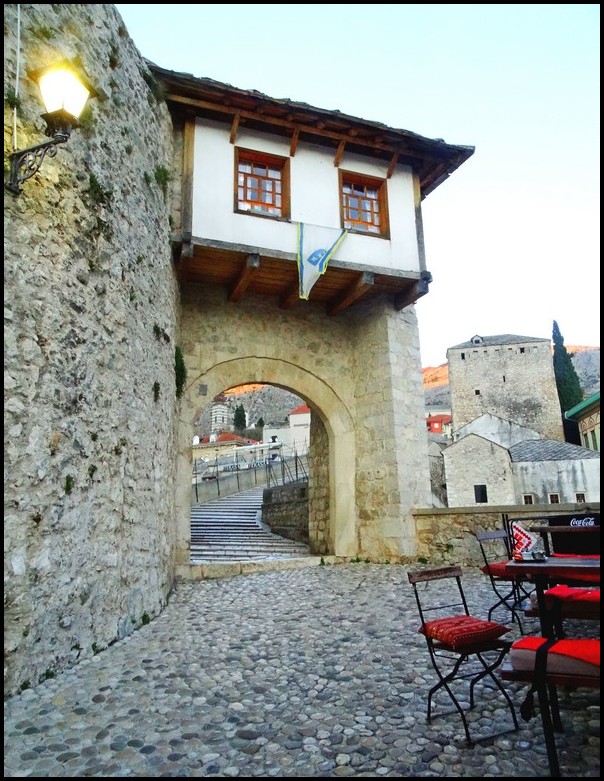
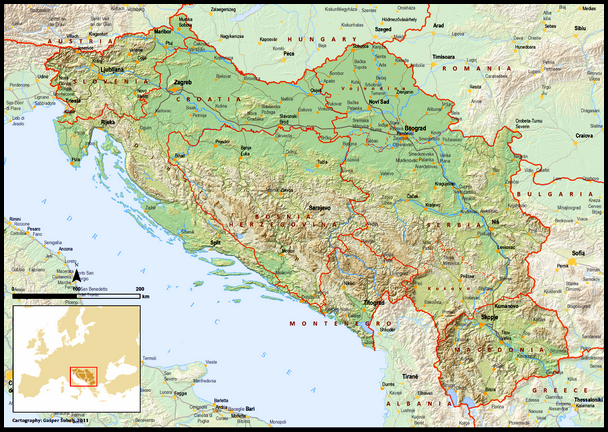
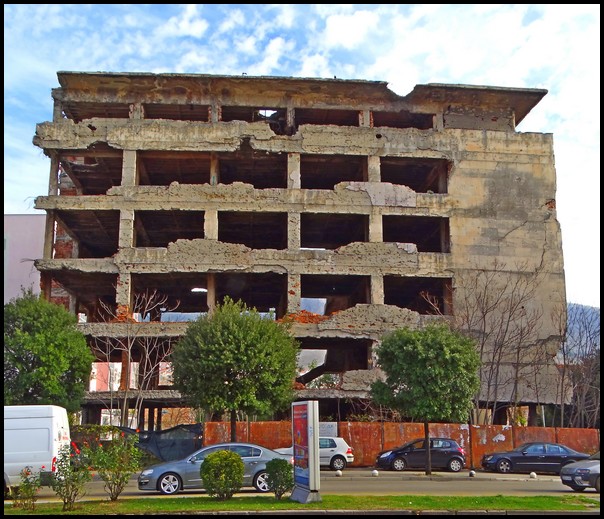
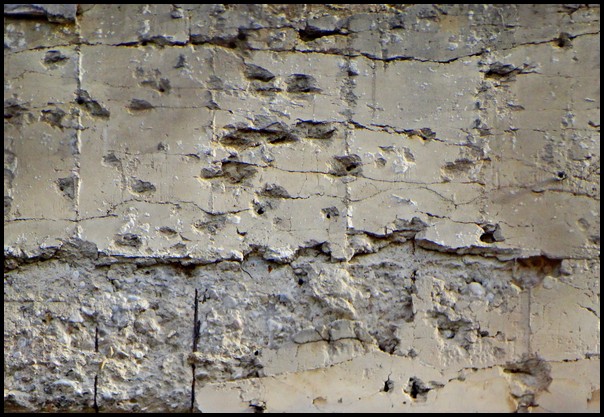
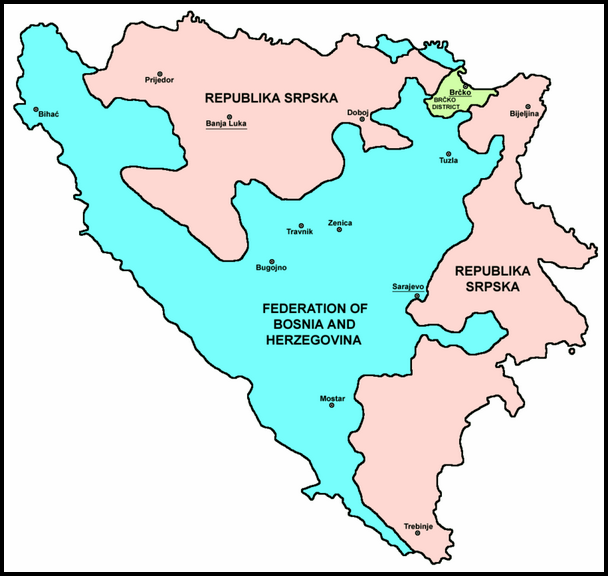
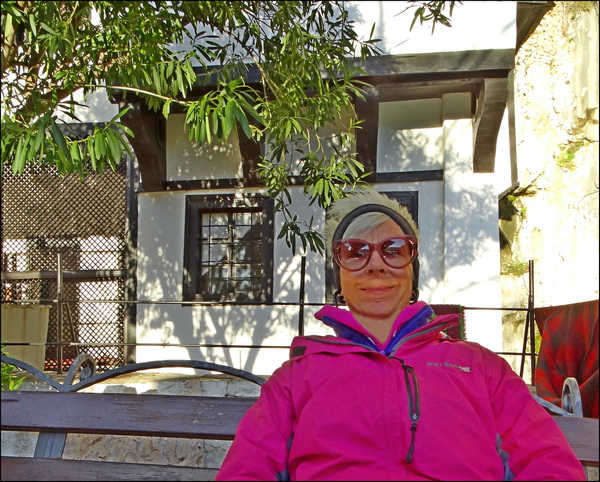
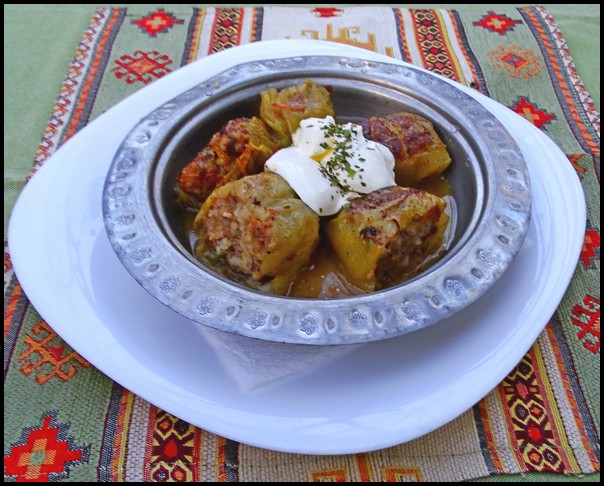
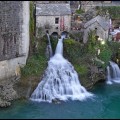

 Hi! I'm Lash, an American nomadic world traveler who's been traveling solo since 1998. I’m passionate about traveling the world nomadically and then sharing it all with you. I hope to inspire you to travel the world, to entertain you with tales from the road, and to help you reach your travel dreams. Welcome!
Hi! I'm Lash, an American nomadic world traveler who's been traveling solo since 1998. I’m passionate about traveling the world nomadically and then sharing it all with you. I hope to inspire you to travel the world, to entertain you with tales from the road, and to help you reach your travel dreams. Welcome! 




5 pings
10 Facts About Bosnia & Herzegovina
2021/01/06 at 6:46 pm (UTC 8) Link to this comment
[…] « Introduction to Bosnia […]
Cost of Budget Travel in Bosnia & Herzegovina in 2020 - LashWorldTour
2021/02/25 at 8:54 pm (UTC 8) Link to this comment
[…] in 1992, it was part of the former communist Replublic of Yugoslavia. I wrote a fairly detailed Introduction to Bosnia & Herzegovina while I was traveling there in December, […]
Surprising Facts about the country of Georgia - LashWorldTour
2021/09/02 at 1:10 am (UTC 8) Link to this comment
[…] Introduction to Bosnia […]